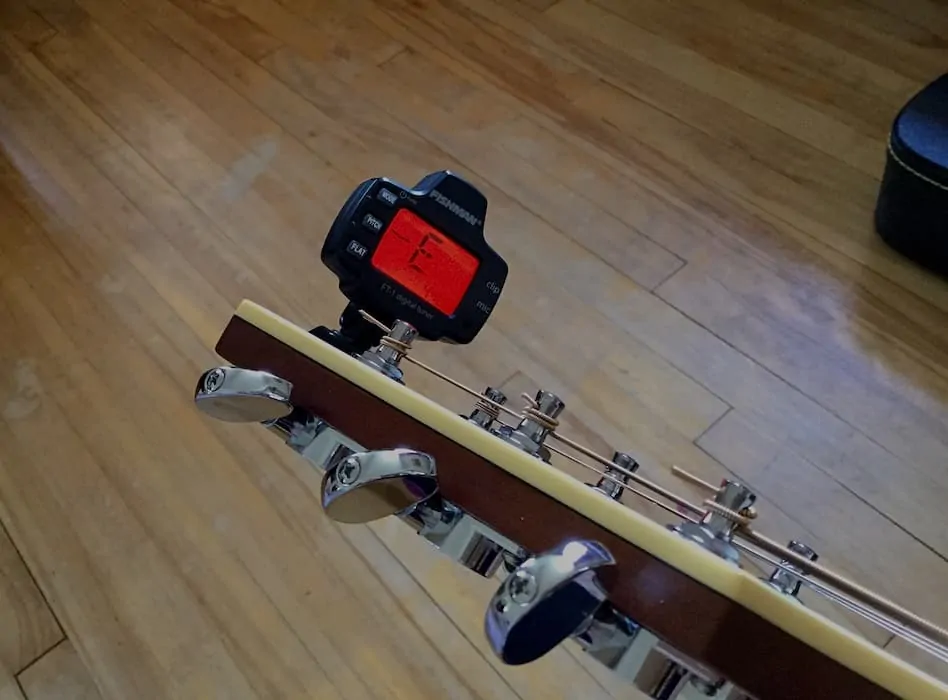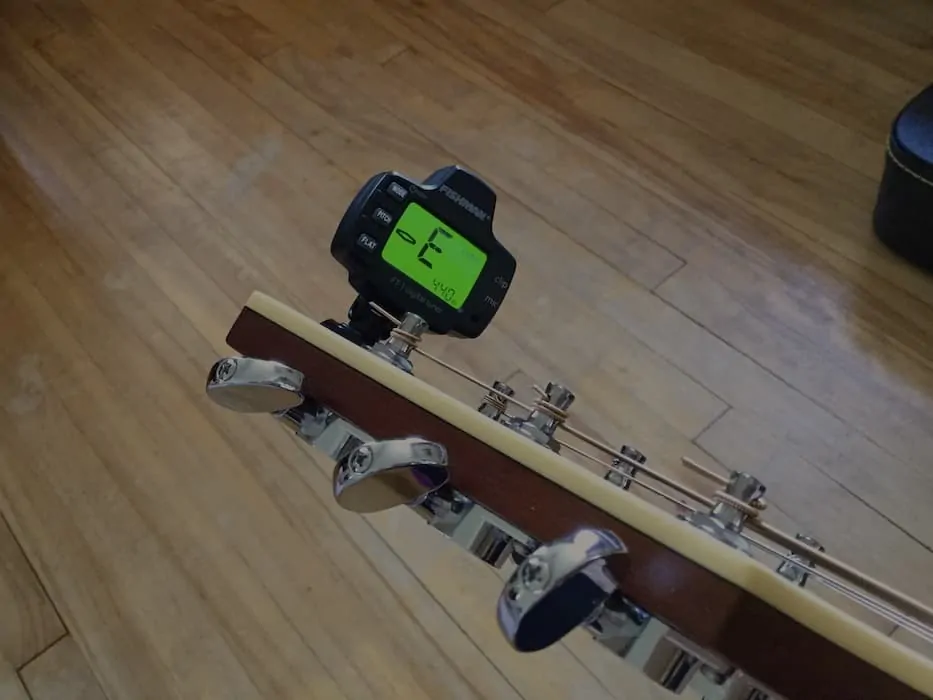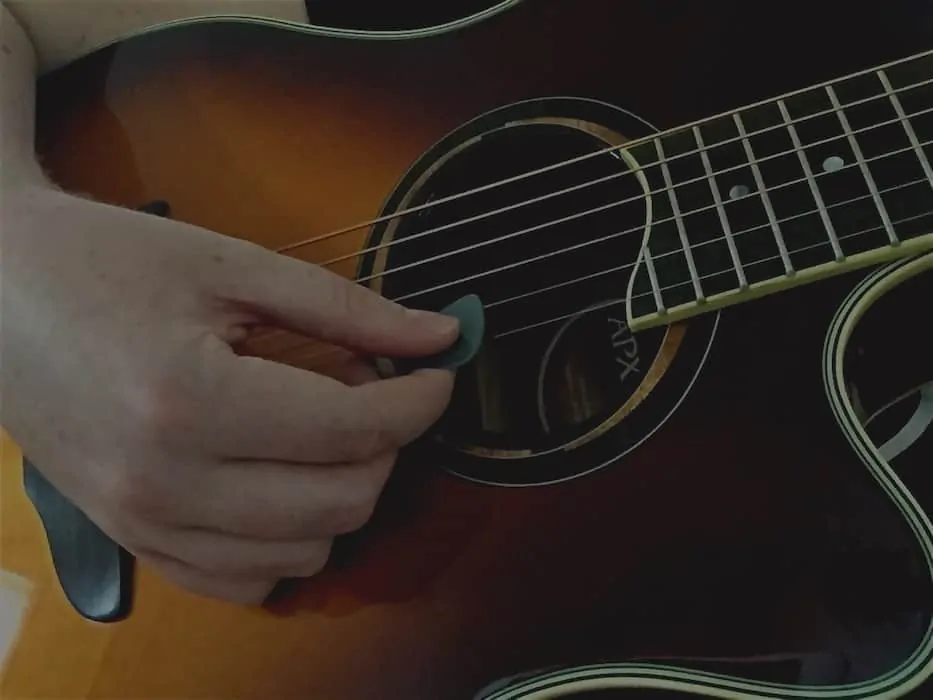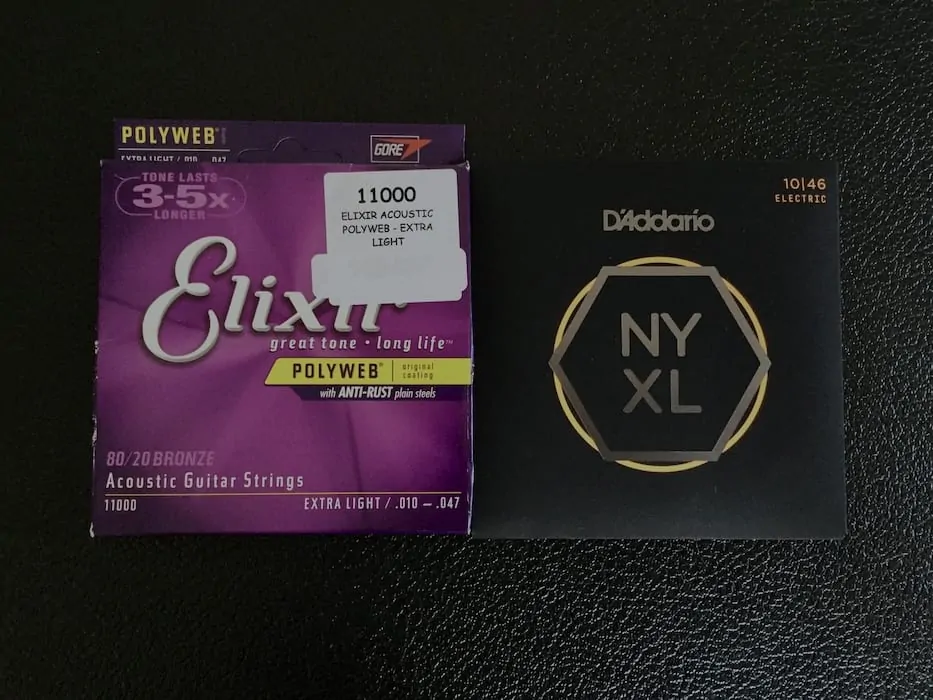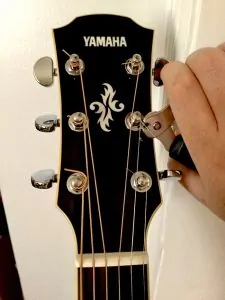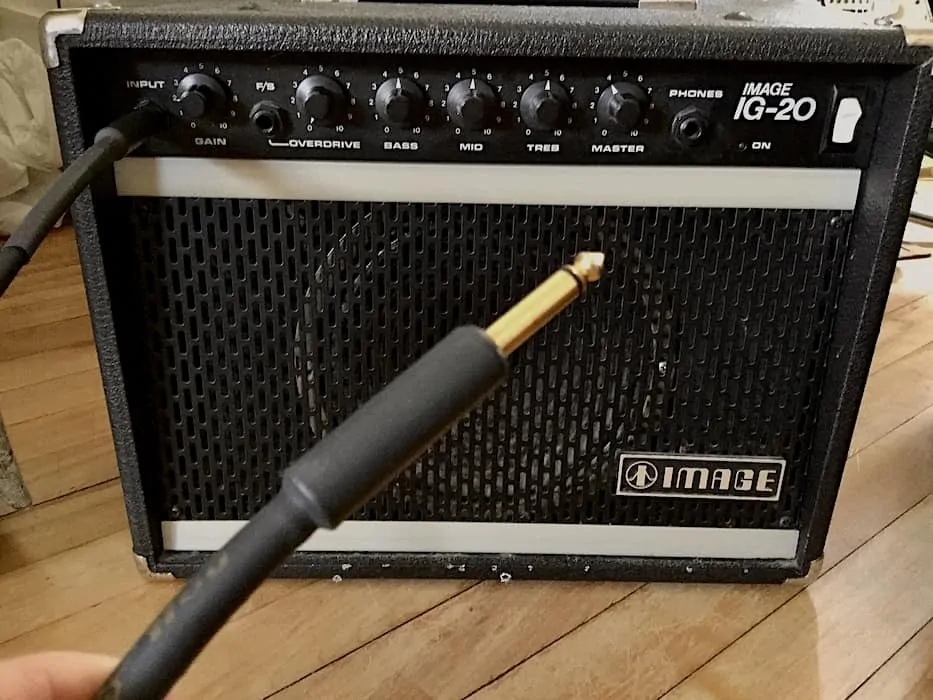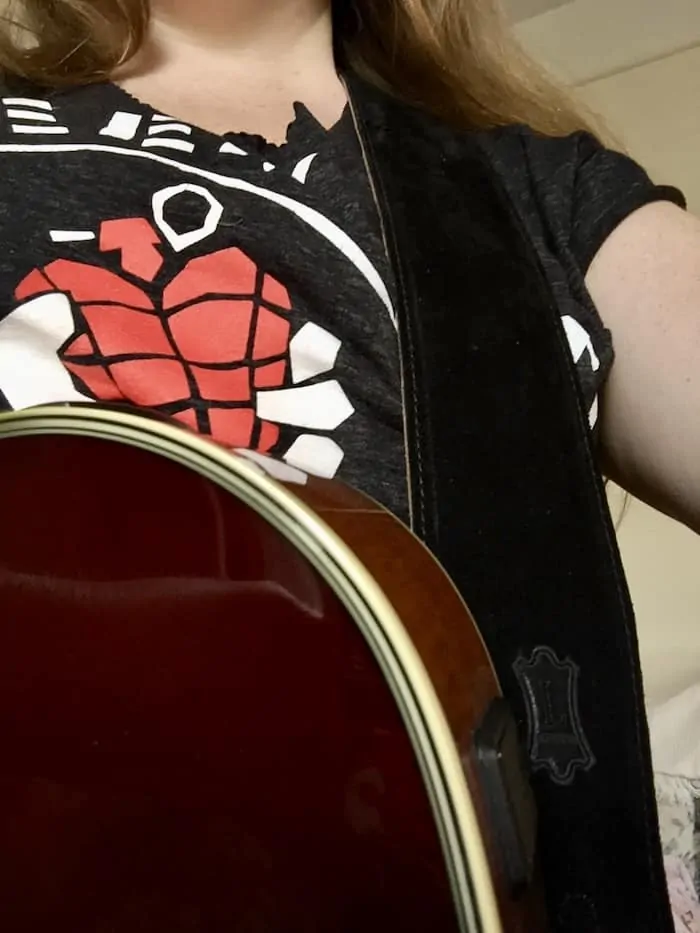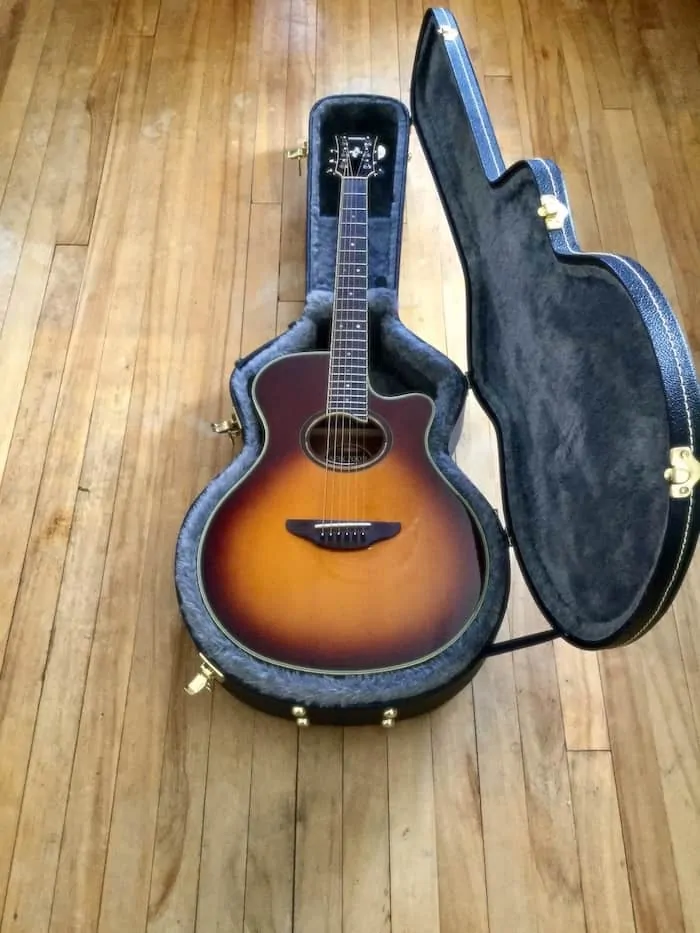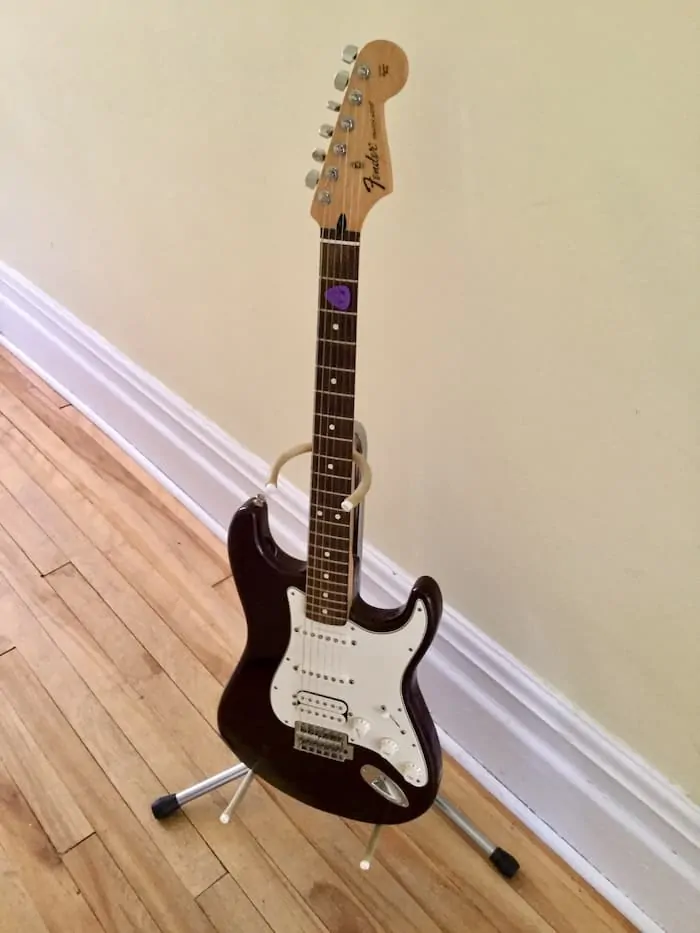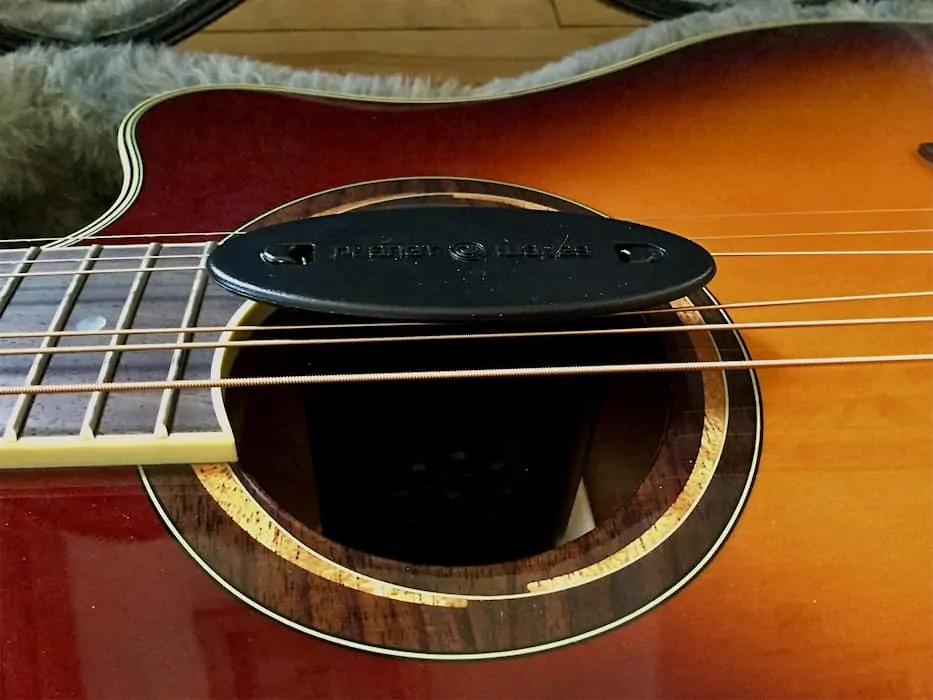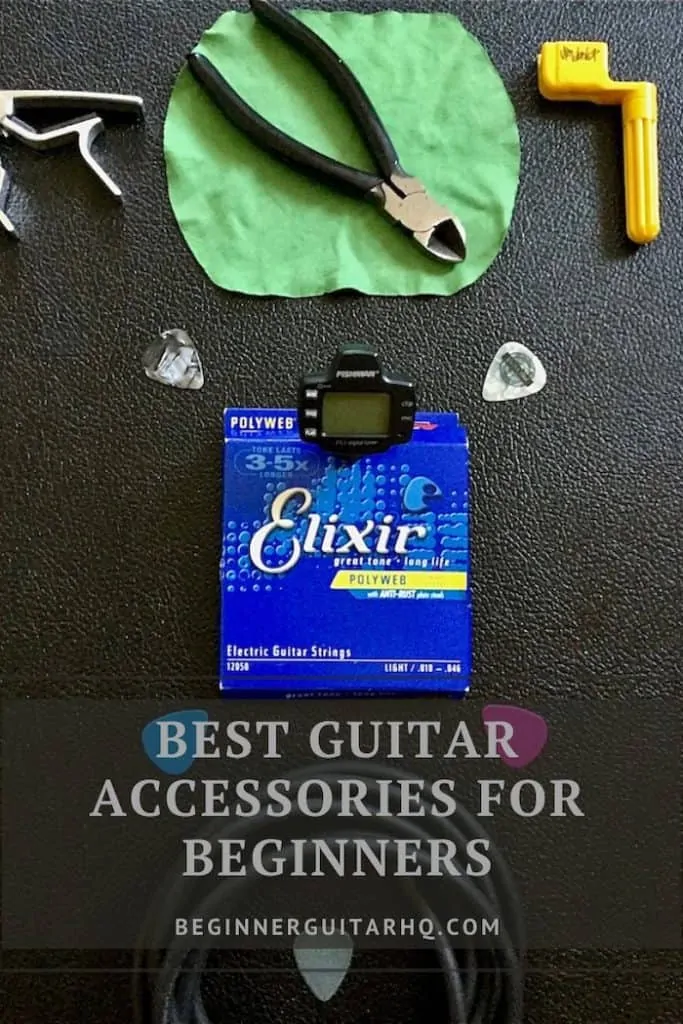When you buy your first guitar, you’ll soon realize that the instrument itself is just the tip of the iceberg. Whether it’s extra strings, fretboard conditioner or audio interface equipment, there’s a never-ending pile of accessories you can add to your purchase.
How can you tell the difference between what accessories you really need vs. what companies tell you you need? This can be tricky. After all, different guitarists have different needs, depending on what type of guitar they have, what genres they want to learn and how often they intend to play.
Still, I would argue that the following accessories are essential for any beginner…
Contents
Tuner
Nothing sounds worse than an out-of-tune instrument. And while there’s decent tuning apps available for iOS and Android, none of them are as accurate as a physical tuner. These must-have accessories will detect all your sharp or flat strings so you can adjust them accordingly. Plus, many newer models feature built-in metronomes. This makes it easier for beginners to keep the beat while they’re playing.
My favorite types are clip-on chromatic tuners. Because they display the notes instead of the numbers of your strings, chromatic tuners allow you to change your pitch below the standard EADGBE tuning. For example, if you want to play in Drop D tuning, you can easily tune your 6th string to a D instead of an E.
This style of tuner lights up red when you’re sharp or flat and green when you’re in tune.
Clip-on tuners are also convenient because they measure the vibrations of your strings from the headstock. This helps you tune your guitar in noisy places. It’s also easier than balancing a traditional tuner on your knee or plugging a pedal tuner into your amp.
Still, some guitarists (especially electric guitarists) prefer other kinds. For more info on these accessories, see our list of the best guitar tuners.
Picks
If you’re a classical guitarist or a fingerpicking acoustic guitarist, you won’t have to worry about picks. But for most beginners, they’re essential accessories to have on hand.
Picks, also called plectrums, are the best accessories to help beginners learn how to strum chords and pick individual notes.
Picks come in all sorts of shapes and thicknesses. That’s why I recommend buying a 12 or 24 pack, so you can try different kinds and see which ones you like best.
Or, depending on what style you play, you may be okay with a single type. For example, soft picks work best for acoustic songs, while hard picks are a must for metal.
No matter which kind you choose, make sure you keep as many as possible in your case and around the house. You’d be surprised how easily picks disappear––especially after you start jamming with friends or performing at gigs.
Check out our article on the best guitar picks for more beginner-friendly options.
Spare strings
Maybe you broke a couple strings while tightening your tuning pegs. Or you’ve noticed rust building up along them. Or maybe they’re starting to sound twangy. These are all signs that it’s time to swap your old strings for new ones.
Even experienced guitarists can forget to buy strings until the last minute. But by keeping at least two extra sets on hand, you won’t have to frantically search Amazon for the quickest delivery date whenever you hear a twang or a snap.
Even as a beginner, it’s better to spend a bit more on high-quality strings that keep their tune and last for months on end. This way, you won’t have to change your strings as often––and you’ll save money in the long run!.
Like picks and other accessories, strings are extremely subjective. What one guitarist loves, another will hate. So, try a few different gauges and coatings to see which ones work best for you.
For more of the best electric strings, click here.
Peg winder/Wire cutter
Changing your strings for the first time is a daunting task, but it’s a lot more manageable with the right accessories. A peg winder helps you loosen and tighten your tuning pegs faster than your fingers. And once you’ve tuned your guitar with your new strings, you can prevent the ends from scratching your hands or your headstock by trimming them with a wire cutter.

I like this D’Addario peg winder, because it includes a wire cutter at the base of the handle (Self-Taken).
Some companies offer a 2-in-1 peg winder and wire cutter. These dual accessories are the most convenient (and surprisingly affordable) option for both beginners and advanced players.
Already have a wire cutter? No worries. You can also buy a separate peg winder that will do the job just as well. Here are the best peg winders.
Capo
While there’s plenty of hits you can master in standard tuning, some of the most iconic guitar songs require a capo on your first, second or even fifth fret. These clamp-like accessories allow you to raise your pitch without tightening your strings and damaging your neck.
The best capos are designed to fit comfortably around your neck and sit flat against your fretboard. This way, you won’t get any annoying string buzz when you try to play. Classical guitars have flat, wide necks, so they need a special capo. There are also different sized curved capos for acoustics and electrics.
Playing with a capo can also help you avoid using barre chords, if you’re not confident with them.
While professionals usually swear by the more expensive screw-on capos, beginners can achieve great tones with trigger or spring clamp capos. These accessories are the easiest types to clamp onto or remove from your frets. Plus, you can keep them on your headstock for quick access between songs.
Looking for more recommendations? Check out our list of the best guitar capos.
Cables
Guitar cables are must-have accessories for any player who needs to plug into an amp. Though beginner kits usually come with cheap cables, it’s helpful to buy a couple of high-quality cables that will last for years of playing.
Like picks, guitar cables are surprisingly easy to lose, especially once you start performing. That’s why it’s best to keep several at home. They’ll also come in handy when you buy effects pedals and other advanced accessories.
Some players prefer the extra protection that comes with fabric cables. Others prefer the sleek design of rubber cables. There are pros and cons to each choice. But most players agree that the biggest difference in sound comes from the length of the cable.
Generally, I like to buy 10 foot cables. They preserve your frequency and cut unwanted noise better than longer cables. They also offer enough room to move around without creating strain on your amp and guitar jacks.
For an in-depth discussion, see our list of the best guitar cables.
Strap
No matter how careful you are, everyone accidentally drops their instrument at some point. But as long as you have a sturdy strap, you don’t have to worry about it. Especially for heavy acoustics, straps ease some of the weight from constantly holding up your guitar’s neck and body. Plus, they encourage you to sit up straight, which helps prevent back pain.
Though they can be hot when you’re playing under bright lights, I prefer leather or suede straps for maximum comfort. If you’re on a budget, however, you might want to buy a cotton strap.
As a beginner, you may be ablse to get away with a cheap strap if you only intend to practice for a few minutes every day. But for extra long jam sessions, your shoulders will thank you if you invest in a comfy strap to keep your guitar in place.
Check out our article on the best guitar straps for more ideas.
Case
Guitar cases are must-have accessories for beginners and pros alike. They protect your guitar whether you’re storing it at home or traveling to a gig. Plus, they provide a handy place to store your tuner, extra strings and other accessories.
Hard-shell cases are the best option for protecting your guitar from dust, dry air and potential bumps or falls. They often include locks for extra security. Most manufacturers also design specific cases for each of their models. This way, you can buy one that fits snugly around your guitar’s body and supports it’s neck at the right place.
If you buy a one-size-fits-all case, your instrument may either squeeze out of the padding or rattle against the sides. You also risk putting too much pressure on the neck by storing it at an odd angle. Still, for popular models like Les Pauls or Telecasters, you can usually find a case that is specifically designed for these proportions––even if it’s not made by Gibson or Fender.
When I bought my Yamaha APX700, the shop didn’t have a hard-shelled case designed specifically for my guitar. Although I had to wait a couple weeks to have it delivered, it was worth it to get one that fit perfectly.
Though they provide less protection, soft-shell gig bags are lighter to carry than hard-shells. These backpack-type accessories are best for traveling short distances, like to a music lesson or a nearby venue. Gig bags also don’t have to fit your guitar as perfectly as hard-shells. As long as you buy one that’s roughly the same size, you should have no trouble with it.
Want more suggestions? Read our review of the best guitar cases.
Stand
Depending on how often you play, you might want to keep your instrument on a stand instead of digging it out of your case every day. But before you do, make sure that your room isn’t too dry or humid. As we’ll see in the next section, too much of either can shorten your guitar’s life.
As a beginner, it’s tempting to go for the cheapest stand. Yet, your guitar will be much safer if you invest in a sturdy metal option.
I prefer tripod stands with adjustable neck cradles for extra support. Other players prefer A-frame stands, which support only the body, or wall-hanging stands, which suspend your guitar by the neck. There’s a lot of debate as to which option is the best. But generally speaking, wall-hanging stands are the best choice if you live with pets or small children.
Here is an in-depth comparison of different types of guitar stands.
Humidifier
One of the most common mistakes beginners make is leaving their acoustics next to radiators or other heat sources. Dry air can lead to cracks in the body and fretboard, raised bridges, warped necks and other damages. In extreme cases, your guitar may be irreparable.
Luckily, you can prevent this with a humidifier. These handy accessories keep your instrument properly hydrated, even in the dead of winter.
If you live in a dry environment or constantly run your heater or air conditioner, it’s a good idea to invest in a sponge-based humidifier for your acoustic or acoustic electric.
The best humidifiers are the drip-free ones that hang between your middle strings. This way, they keep your guitar moist without soaking the inside of the wood or damaging the electronics.
Be careful not to overuse your humidifier, as too much humidity is also bad for acoustics. It causes them to swell, leading to string buzz and eventually mold growth.
The best way to maintain that happy medium is to keep your humidity levels between 35-50%. When it dips below this, you can add a humidifier to your strings. When it rises above this, you can add silica gel or charcoal packs to your case to absorb the extra moisture.
Here is more information on acoustic guitar humidifiers.
Guitar care kit
To extend the life of your strings, protect your fretboard and maintain a fingerprint-free finish, it’s a good idea to invest in a basic care kit. Aside from string cleaner, fretboard oil and polish, many also come with microfiber cloths, #0000 steel wool and other accessories to keep your guitar looking and playing its best.
Unfortunately, there’s no universal care kit, so it’s important to buy the right products for your specific model. For example, maple fretboards should never be treated with lemon oil, as this will strip away their finish. Some polishes can also destroy the finish on the body of your acoustic or electric.
<iframe width=”560″ height=”315″ src=”https://www.youtube.com/embed/Hd9_5RvobKA” frameborder=”0″ allow=”accelerometer; autoplay; encrypted-media; gyroscope; picture-in-picture” allowfullscreen></iframe>
Although this video deals specifically with Dunlop accessories, the same principles apply to string cleaners, fretboard oils and polishes from other brands.
Read this article for more information on how to care for your guitar.
As you continue your musical journey, you may find there’s other accessories you’d like to experiment with, whether it’s effects pedals, slides or wireless guitar systems. But as a beginner, it’s better to concentrate on improving your playing without the extra bells and whistles. With a bit of patience, you’ll soon master the basics. Then, you’ll be ready to take your playing to the next level with more specialized accessories.

